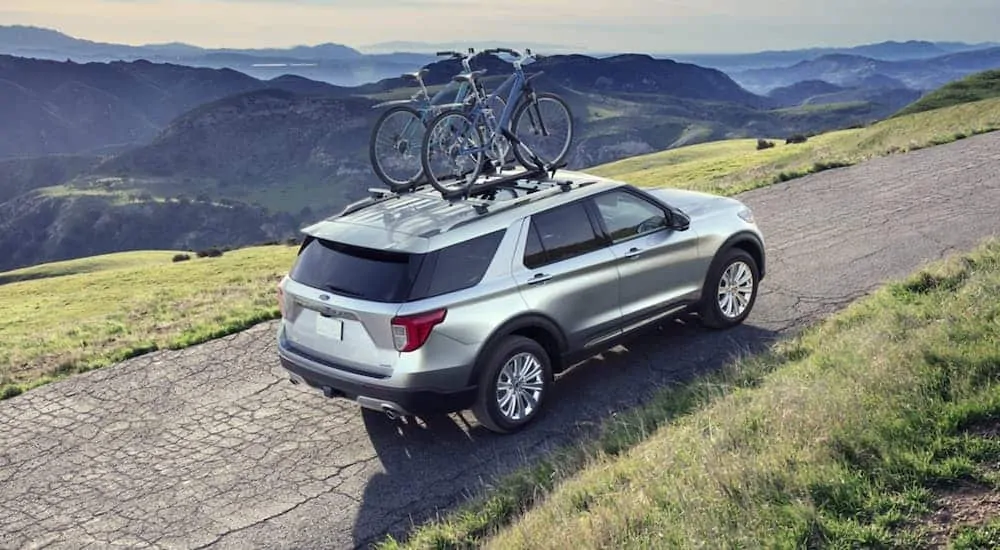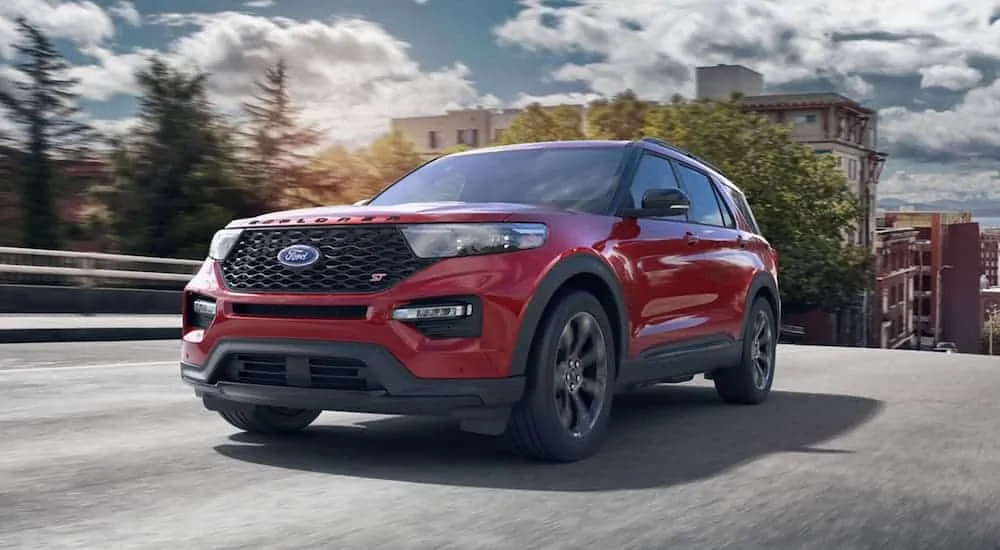With the demands we place on the modern SUV, it’s no wonder that auto manufacturers go above and beyond when designing and outfitting their latest offerings. Nowhere else is this more evident than in the redesigned Ford Explorer and the all-new Kia Telluride. Both models have many useful and inventive features we didn’t even know we needed. So let’s take a look at two of the best examples of this and see how they compare: 2020 Ford Explorer vs 2020 Kia Telluride.
The Ford Explorer is the most popular SUV in the country, with more total sales than any other SUV, while the Kia Telluride is new to the segment for the 2020 model year. It’s clear that Ford has been at this for some time, there is a powertrain option for everyone along with many other available features to customize the SUV to meet the needs of your lifestyle.
While you won’t find as many options for the Telluride—for example, there is only one choice of engine—you will find that this entry into the segment is more competitive than Kia’s previous attempt, the 2009 Kia Borrego. The Telluride proves to be a much more formidable competitor to the Explorer than the Borrego, and it’s clear Kia made a concerted effort to address the needs of the modern family.
Powertrain Choices

Is one powertrain option enough? That’s the question you will have to ask yourself when shopping in this segment because the Kia Telluride only offers one choice. It’s not a bad one, though, and seems to be up to the task. The Telluride employs a 3.8-liter V6 that generates 291 hp and 262 lb-ft of torque. The base engine in the Explorer outperforms this engine all around, so there’s no real contest here, especially when you start looking at the Explorer’s other options, which we’ll get to later. For now, let’s compare the base offering from Ford: A 2.3-liter turbocharged inline-4 with 300 hp and 310 lb-ft of torque.
Keep in mind, this is the standard engine for the Explorer, and they only get better as you climb trim levels. This engine has cost-effective fuel efficiency at 21/28 mpg (RWD) and 20/27 mpg (AWD). The Telluride comes in lower at 20/26 mpg (FWD) and 19/24 mpg (AWD). So if you are looking for a powerful engine with top-of-its class fuel efficiency, the Explorer is the best option.
Unfortunately for the consumer, the Telluride is left in the (metaphorical) dust for the rest of this conversation. And it’s too bad because the Explorer has some fun options to talk about, and you hope that future models of the Telluride will as well. Let’s start with the next available option for the Explorer, a 3.0-liter twin-turbo V6 with 365 hp and 380 lb-ft of torque. You can expect to get 18/24 mpg (AWD) with this engine, which is similar to the Telluride’s base engine, but with a great deal more power.
Here is where it gets interesting. If you’re looking for a fast engine, Ford has one for you. For the ST trim, you get a 3.0-liter EcoBoost V6 with 400 horsepower and 415 lb-ft of torque. Fuel economy is about the same at 18/24 mpg (AWD). You can do the math on this one—again, there is no contest between the powertrain offerings of these midsize SUVs.
If you don’t need that much power and are looking for superior fuel efficiency—among the best in its class—then you should consider the hybrid option. New for the 2020 year is an impressive hybrid option from Ford. It’s a 3.3-liter V6/electric motor (Hybrid) with 318 horsepower and 322 lb-ft of torque. Even the Explorer’s hybrid engine outperforms the Telluride’s V6. And at 27/29 mpg (RWD) and 23/26 mpg (AWD), you won’t be stopping at the gas station very often. With this engine, the Explorer has a range of 500 miles!
Standard Features
So what can you expect to come standard? It’s always good to know which features come standard and which ones you’ll need to add, so let’s take a look and see how these two SUVs compare. Depending on your needs, you might want to look at adding more safety features if you will be using this vehicle to carpool and drive the kids around, or maybe you want to look at some of the exciting high-tech features. Either way, both midsize SUVs have a lot to offer.
Both SUVs come well-equipped even at the entry-level trim. With the Explorer, you can expect a power liftgate, satellite radio, Sync connectivity, and Ford’s Co-Pilot 360 safety suite. The Telluride counters with an impressive list: 18-inch aluminum wheels, leatherette upholstery, second-row climate controls, an 8-inch touchscreen infotainment system, and Kia Drive Wise suite of safety technologies. What’s great about both SUVs is that there is so much standard safety tech included. Your family will appreciate the emphasis on keeping the safety suites affordable.
Too Many Options
While the Telluride cannot keep up with the Explorer’s many powertrain options, it does hold its own with optional equipment. Stepping up one trim level brings the availability of all-wheel drive and a 360-degree camera. With the EX and SX trims, a tow package equips the Telluride with self-leveling suspension. This is partly because the Telluride is one of the lightest vehicles in its class, but it still puts up a decent max towing of 5,000 pounds.
There are also many options for bringing a lot of luxury-like finishes to the Telluride, which makes it very attractive in its class. The SX trim adds 7-passenger seating, 20-inch, dark-finish aluminum wheels, a Harman Kardon premium sound system, and a camera-based blind view monitor system. The Telluride is one of the more family-friendly SUVs in the segment with lots of safety options, and the creature comforts and stylish touches your family will appreciate.
The 2020 Ford Explorer offers a number of packages as well. A Class III Trailer Tow Package (standard on the ST and Platinum) adds a Class III chassis-mounted hitch, among other equipment. The Comfort Package adds heated first-and second-row seats, a heated steering wheel, and a windshield wiper de-icer. A High-Performance Package, available only on the ST model, brings 21-inch aluminum-alloy wheels and larger front brakes.
If you’re looking to boost the tech on board, the Premium Technology Package offered for the Ford Explorer might be in your wheelhouse. Here you’ll find massaging multi-contour seats, a 10.1-inch vertically oriented touchscreen, and a 980-watt Band and Olufson sound system. You can find this one at a bargain—only $995—on the ST and Platinum trims.
While both SUVs have their advantages, it’s clear that this isn’t the Ford Explorer’s first rodeo. Ford has given us so many options, the hardest part is culling through the many available options and features and deciding what to buy. The Kia Telluride, however, is a nice addition to the segment and one to keep an eye on down the road. It’s just hard to match the Explorer’s powertrain options, especially if you need a family vehicle that can be relied on for a variety of needs. With the 2020 Explorer, there is something for everyone.





